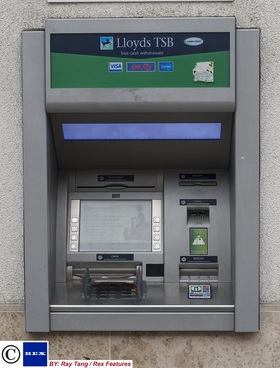Reasons Why ATM Usage Will Not Decline
Fees are increasing for ATM usage across the country. These can mount up, and even become downright expensive for customers when they use ATMs outside the network of their bank. Many consumers are being double-tapped with fees, even when withdrawing as little as ten dollars. This may cause business owners who host an automated teller machine some concern. After all, can the consumer afford to continue using the ATM if they are being hit with fees from both sides? But there is no cause to fret.
According to a 2013 national survey conducted with more than 3000 consumers and called the TD Bank Checking Experience Index, ATM banking is the second most popular channel, seeing 3.2 transactions a month in the United States. The same study shows that 38% of consumers cite convenient ATMs as one of their critical issues. ATMs are just as important to your customers as they are to you.
Convenience

The main attraction of ATMs is their convenience. People no longer have to go their bank during banking hours, write out a withdrawal slip or check, and wait in line to get their money. ATMs have become such an integral part of people's banking habits that they also use them to deposit money into their checking or savings accounts. In reality, most consumers do not want to spend their lunch breaks at the bank nor do they want to rush to the bank after work and wait in line. ATMs are open 24/7 for quick, easy deposits and withdrawals.
Quick cash
While debit and credit cards theoretically can be used for almost any type of transaction, there are some places where they just will not work. Many laundromats operate on quarters and their change machines accept only bills, not cards. Some merchants require cash for the purchase of a money order, and most gambling casinos, slot machines, and lottery ticket sales require cash. In addition, many small restaurants or food trucks run on a cash-only basis, meaning patrons will still need to find the nearest ATM to buy a quick sandwich or a drink.
No bank account
Millions of Americans live a cash-only life. Unfortunately, it is not always by choice. These people are considered "unbanked" and rely on expensive means to gain access to cash.
One of these methods is to have their paychecks, social security checks, and income tax refunds deposited into a refillable debit card account. These cards carry usage fees, but for most of the unbanked it is easier to pay the fee than to find a store or other establishment that will cash their checks. As a result, such people rely heavily on ATMs to gain access to cash.
ATM fees are on the rise both at banks and in store-placed machines. Nonetheless, use of the machines is steadily increasing. It is unlikely that ATM usage will decline in the near future.
Swipe fees give consumers another reason to like ATMs
Retailers have long been feeling the crunch from swipe fees, but now some customers might be suffering from them as well. Credit card companies charge merchants a fee every time customers chose plastic over cash, but a U.S. court settlement more recently allowed retailers to pass that cost on to consumers.
Many customers may not even realize it, but it is often perfectly legal for retailers to pass on a swipe fee, or "checkout fee," every time they use their cards at the register. This usually equals between 1.5 percent and 4 percent of the total purchase. Some state attorney generals have restricted the practice, but fed-up merchants in many parts of the US are charging a bit extra to their customers.
Back to cash
No retailer wants to anger the customer but passing along such fees might seem necessary. Profit margins can be very slim, and the increasing popularity of cards means swipe fees are eating into larger and larger chunks of a retailer's income. Retailers find themselves in the unwanted position to simply pass along the fees to help out, even though it may anger some customers.
Or, the retailer may choose to no longer accept cards from those companies that charge extra fees, or take debit or credit cards at all, a path that leads right back to cash.
Solving the "cashless" problem
To do this, retailers need to overcome the United States consumers' slow evolution away from cash. It is true that many people do not carry cash anymore, so stores that want to encourage cash need to supply an automated teller machine, or ATM, on the premises. Stores that have an ATM near the register can offer their customers the chance to get cash quickly, easily, and conveniently, and even at a profit to the retailer.
Retailers can put notices up near the registers to direct customers to the in-house ATM, encouraging people to pay with cash and avoid the problem altogether. Having an ATM in the store, rather than a block or two away, may be a way to defuse the ire of some customers who are card dependent and keep them coming back.
Paying close attention to the needs of customers is one of the best ways to generate business. Although it is unfortunate that card transaction fees have risen so high, the inconvenience brings an opportunity for ATM merchants, and clever retailers, to step up to meet consumers' needs. BuyerZone can help you do that with quick access to quotes and vendors that can bridge the gap between you and your consumer while giving you both what you want out of an ATM banking experience.
Ready to Compare ATM Machines Price Quotes?